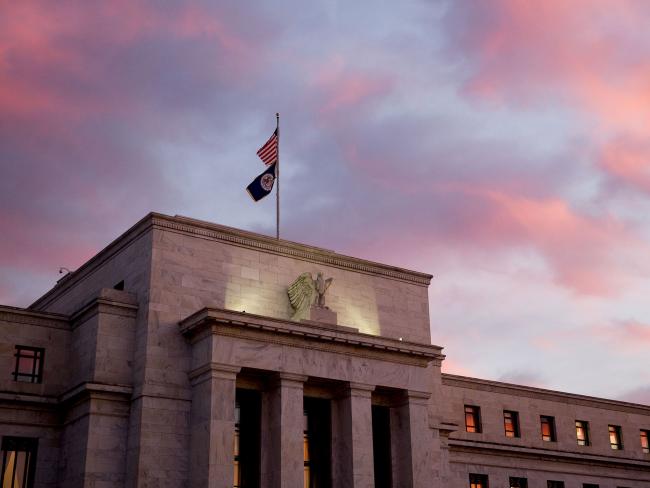 © Bloomberg. A U.S. flag flies on top of the Marriner S. Eccles Federal Reserve building at sunrise in Washington, D.C.
© Bloomberg. A U.S. flag flies on top of the Marriner S. Eccles Federal Reserve building at sunrise in Washington, D.C. (Bloomberg) — Documents released Monday by the Federal Reserve reveal new details about how deeply involved the central bank’s Washington-based officials get in the search and selection of regional Fed presidents.
The records, obtained by Bloomberg News under a Freedom of Information Act request and including dozens of emails, show that in 2017 then-Fed Governor Jerome Powell kept up a running discussion by phone and email with officials at the Richmond Fed over the 10-month period leading up to the appointment of Thomas Barkin, a McKinsey & Co. Inc. executive, to lead the regional bank. Powell, now chairman of the Fed, was then head of the central bank’s committee for overseeing regional Fed banks.
On at least two occasions, Powell sent the Richmond directors names of potential candidates for their consideration. At other times he offered feedback, his own and from others at the Fed, on names compiled by the Richmond board and by the search firm hired to identify candidates. He also urged the directors to consider advice from Fed Governor Lael Brainard. In all cases, the names of candidates and specific feedback on them were redacted from the documents.
The emails also suggest that Richmond officials and their search firm were eager to hear what Powell had to say about their candidate list.
“The emails certainly nail down the details of the ways in which Powell and Brainard were involved — passing along names, reviewing candidates along the way and interviewing the finalists,” said Sarah Binder, a senior fellow in governance studies at the Brookings Institution and co-author of a book on the Fed, after reviewing the documents.
Diversity Efforts
None of the documents, Binder notes, show the Fed governors urging the Richmond directors explicitly to broaden their search to include more women or minority candidates. But they do include, she said, a memo from the Richmond board chair, Margaret Lewis, outlining her bank’s efforts to create a diverse pool from which to select a president.
That memo, which was previously released under the same records request in May, stated that the bank’s efforts to consult with organizations “whose missions include a focus on diversity and inclusion” resulted in “minimal direct results.”
Of the internal Fed correspondence included in the release, none were to or from then-Fed Chair Janet Yellen, leaving unclear whether she ever weighed in on the process. Yellen left the Fed in February when her term expired.
In recent years, the Fed’s board of governors has assured critics and lawmakers that the Washington-based leadership gets directly involved in presidential search processes with a particular focus on ensuring the candidate pools are diverse.
Secret Process
The December appointment of Barkin, a non-economist and an unknown in central banking circles, proved controversial. Some critics said the selection failed address the lack of racial and gender diversity among the Fed leadership. Others attacked the lack of transparency in the selection process. Like other regional Fed appointments, Barkin’s identity was kept secret until after his selection was finalized.
Along with Fed governors, the central bank’s 12 regional presidents serve on the policy-making Federal Open Market Committee, which sets the world’s most important benchmark interest rate. They are appointed by their respective boards of directors, subject to the approval of Fed governors in Washington.
Richmond directors decided unanimously to appoint Barkin, whose pick was approved by the Board of Governors on Dec. 1. He took office on Jan. 1.
Source: Investing.com



























